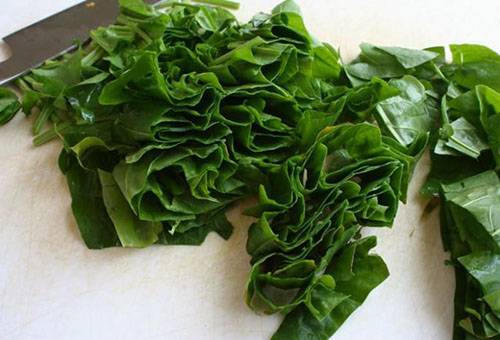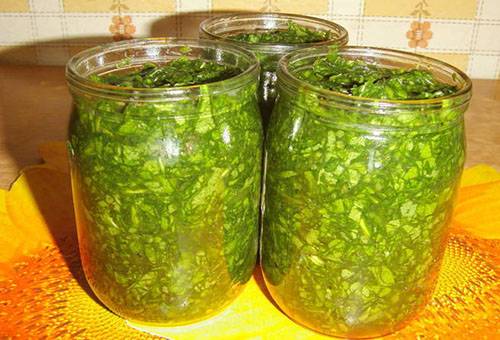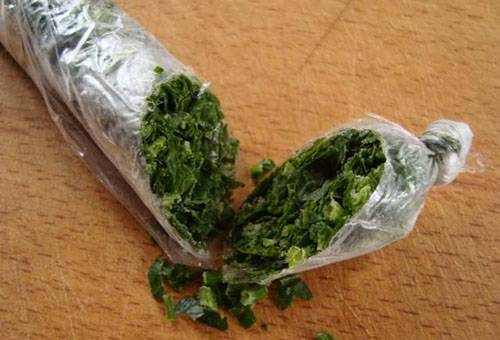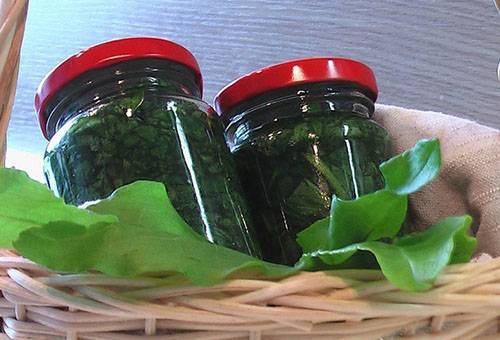Is it possible to freeze sorrel in the freezer for the winter?
The best thing we can do for our body during the cold season is to please it with a hot dish with fresh vegetables, such as green borscht with sorrel. But how can you preserve sorrel, you ask? As easy as pie! Harvesting sorrel for the winter is not as difficult as it seems. We have prepared for you three proven ways to preserve this green ingredient.
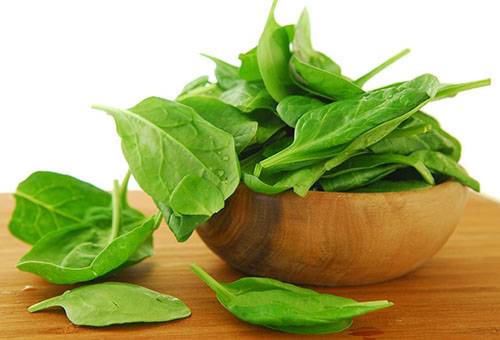
Sorrel - what is it?
Each of the readers has probably seen sorrel many times. The fact is that this unpretentious plant can live anywhere: even in the garden, even on the street near the road. Outwardly, it is unremarkable and resembles a plantain in appearance. The only difference is that sorrel leaves are thin, smooth and oblong in shape. Well, the main feature is that it can be eaten - and the taste of this plant is moderately sour - and thus keep your body in good shape! You can either pickle sorrel or cook it raw - your immune system will thank you anyway.
By the way, in Rus', sorrel began to be eaten only in the 18th century, despite the fact that it was literally under people’s noses, or more precisely, under their feet. For a long time it was not recognized as an independent plant. Meanwhile, in France, sorrel was widely used as the basis for any folk dish recipe. Probably, with the light hand of French cuisine, very popular in Russia during the Enlightenment, sorrel became a new culinary discovery in Rus'.
How to preserve sorrel for the winter?
Due to its taste, the plant is often used in hot dishes and salads. The most popular recipe is cabbage soup or sorrel soup, a very tasty and, most importantly, healthy dish. To enjoy this soup all year round, folk craftsmen have invented some methods. We'll talk about them.
But before preparing the product for preservation, you must do the following:
- rinse the leaves thoroughly, or even better if you scald them with boiling water;
- cut off the stems;
- Sort through the leaves and get rid of those that are unsuitable for food (rotten, torn, withered). They may contain an infection that can spread to other plants.
Method 1: salting
This is the oldest and time-tested way to keep food fresh. Salting as a special storage method has two distinctive features.
- This is a quick recipe that won't take much time.
- Dishes containing the final product will not need to be salted, since the sorrel will absorb the salt during storage.
So, to pickle sorrel for the winter, you will need:
- empty clean jar;
- washed leaves;
- salt.
To begin, cut the sorrel the way you like: it can be thin strips or small pieces. Place some sorrel in the jar to cover the bottom. Then sprinkle this layer generously with salt. Place a new layer on top and sprinkle with salt again. Fill the entire container in this way, alternating sorrel with salt.
Some useful tips about pickling.
- The thickness of the layers depends on how salty the product you want to get in the end. The thinner the layer, the saltier the winter preparation will be.
- The jar should be stored in the refrigerator.
- The finer you chop the plant before salting, the more juice it will give.
That's all! The finished product can be added to soups, salads or eaten just like that. Bon appetit!
Method 2: freezing
A universal recipe for preserving a product is to freeze it for some time. Cold prevents the growth of bacteria, prevents the breakdown of substances and stores vitamins. So, how to freeze sorrel for the winter?
Cold preparation of sorrel is carried out according to a recipe that is even easier than salting: you just need to chop the leaves of the plant, put them in bags and leave them in the freezer. This recipe allows you to preserve maximum nutrients in the leaves, which is important for maintaining the body’s immunity in the autumn-winter-spring period.
What do you need to know before freezing sorrel?
- Remember that such preservation is disposable, that is, after defrosting, the product should be immediately consumed.
- Secondary freezing is pointless, since with it the plant completely loses its benefits, accumulating only toxins.
- Before freezing sorrel, do not forget to sort through the leaves and throw away any rotten ones that are unsuitable for food.
Method 3: preservation
Canning is the most innovative way to prepare sorrel for the winter. Preservation was officially introduced in the 18th century by the French scientist Appert, who decided to participate in a competition for the best way to keep food fresh and won it with his ingenious invention. The judges were especially amazed by the shelf life of the products: the vegetables and fruits on which the experiment was carried out did not deteriorate at all in more than eight months!
What did Upper do? He invented canning (from the word conserve - to store), the recipe for which consisted of the following steps.
- The product was placed in a tin can, from which air was pumped out through a tiny hole.
- The jar was boiled in hot water, the temperature of which exceeded the boiling point. This was done in order to destroy harmful microorganisms.
- The jar was cooled and left for storage.
The recipe spread very quickly throughout the world, and now it is difficult for us to imagine that twisting jars every summer is not an old Russian tradition, but just an invention of one chef from Europe.
So, to preserve sorrel for the winter, we need leaves, salt, boiling water and jars.
- The first step is to sterilize the jars, that is, to rid them of bacteria invisible to the eye. Do the same with the leaves - you can scald them with boiling water.
- Cut the leaves into strips and compact them into a jar.
- When the jar is filled to the top, place half a teaspoon of salt on top (calculation per 1 liter).
- Pour boiling water into the jar and close the lid.
- Before freezing sorrel in a jar, it must be cooled. The jar should be kept upside down at room temperature until it cools completely.
